Green Vault jewels will not be exhibited until court case ends
13 January 2023Free State of Saxony seeks additional civil action
An initial inspection of the jewels stolen from the Historisches Grünes Gewölbe (Historic Green Vault) and now handed over to Staatliche Kunstsammlungen Dresden (SKD) has shown that despite some damage to individual pieces, this has not diminished either their important place in art history or their international appeal. As the items of jewellery are still being used as evidence in the criminal proceedings, they may not yet be exhibited in public.
As an SKD restorer testified at the main hearing on Tuesday, the pieces are in different states of preservation, having been exposed to a range of external influences extending from mechanical damage to contact with moisture. This damage can, however, be almost fully repaired.
The SKD plans to convene a panel of experts to discuss the condition of the items and the restoration measures to be taken.
The SKD has regained possession of the following pieces:
- the breast star of the Polish Order of the White Eagle, from the brilliant-cut diamond set by Jean Jacques Pallard, Geneva/Vienna, between 1746 and 1749
- the hat brim jewel (aigrette) from the brilliant-cut diamond set, by August Gotthelf Globig, Dresden, between 1782 and 1807
- the rapier from the rose-cut diamond set by Christian August Globig and August Gotthelf Globig, Dresden, 1782–1789 (taken apart, without the blade)
- two curved shoe buckles from the rose-cut diamond set, workshop of Christian August Globig, Dresden, 1782–1789
- the hat ornament from the rose-cut diamond set, Christian August Globig and August Gotthelf Globig, Dresden, 1782–1789
- the insignia of the Polish Order of the White Eagle, from the rose-cut diamond set, Christian August Globig and August Gotthelf Globig, Dresden, 1782–1789
- the epaulette from the rose-cut diamond set, Christian August Globig and August Gotthelf Globig, Dresden, 1782–1789
- six skirt buttons from the rose-cut diamond set, Jean Jacques Pallard, Geneva/Vienna, between 1746 and 1749
- the aigrette for the hair in the shape of a sun, from the queens’ diamond jewellery and pearls, August Gotthelf Globig, Dresden, between 1782 and 1807
- and part of a muff hook from the queens’ diamond jewellery and pearls, from the workshop of Jean Jacques Pallard, Geneva/Vienna, between 1746 and 1749.
Still missing are the brilliant-cut diamond necklace worn by Queen Amalie Auguste (1824; parts were left behind), the large bow-shaped stomacher worn by Queen Amalie Auguste (1782), the epaulette with the Saxon White Diamonds (between 1782 and 1789), the large rose cut Diamand, 2 Skirt Buttons and various smaller pieces.
To ensure that it receives potential damages and to gain access to the files, the Free State of Saxony has submitted an application to Dresden District Court for an additional civil action to be brought during the ongoing criminal proceedings: the course taken by the court case indicates that this additional claim against the accused could be won. Known as “adhesion proceedings”, this type of additional action offers victims of a criminal offence the chance to lodge a civil claim against the accused under property law (e.g. for the payment of damages) without waiting for the criminal proceedings to come to an end.
Marion Ackermann, Director General of the SKD: “We are delighted that we will soon be able to let the public see the recovered jewellery for themselves and celebrate its return with us. It will drive home the fact that the pieces of greatest significance to the history of art are back in our possession, and only a few items are still missing. The restoration will add the finishing touch to the dazzling overall effect.”
returned objects (condition prior to theft)
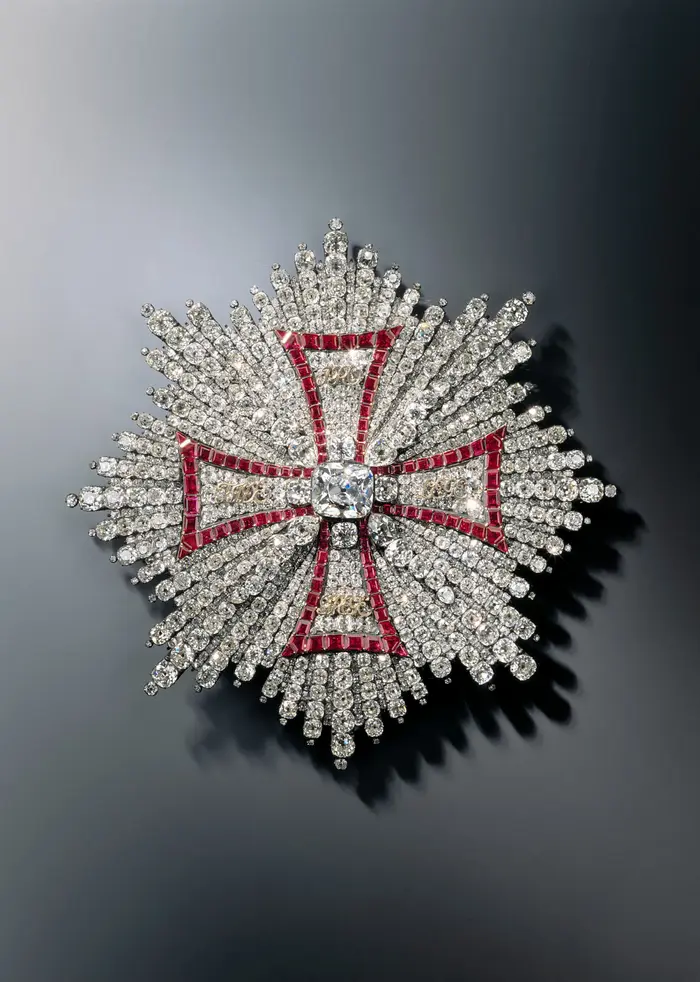
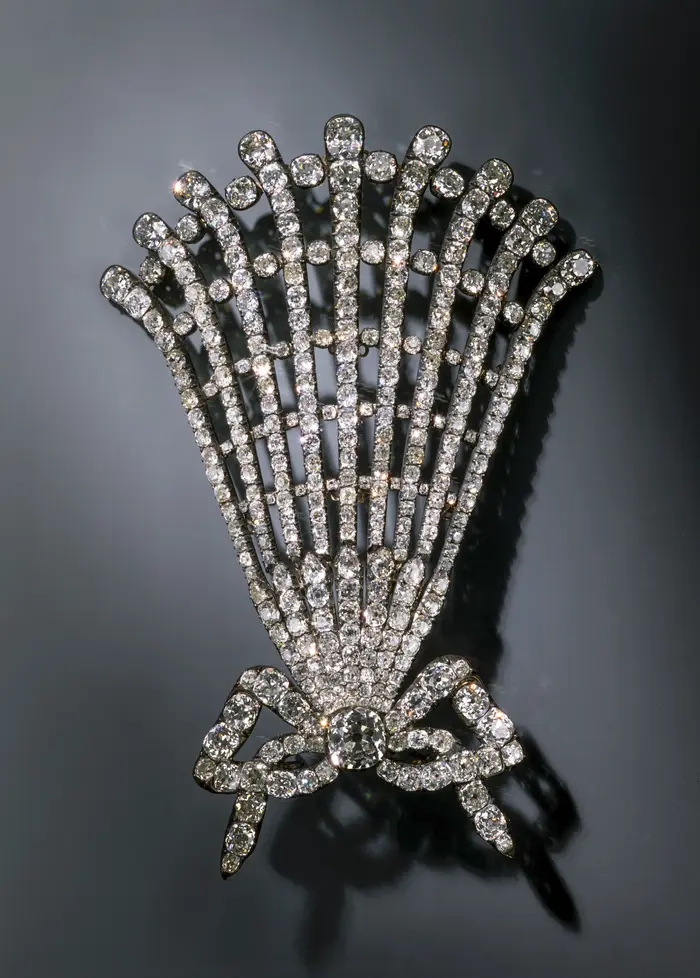
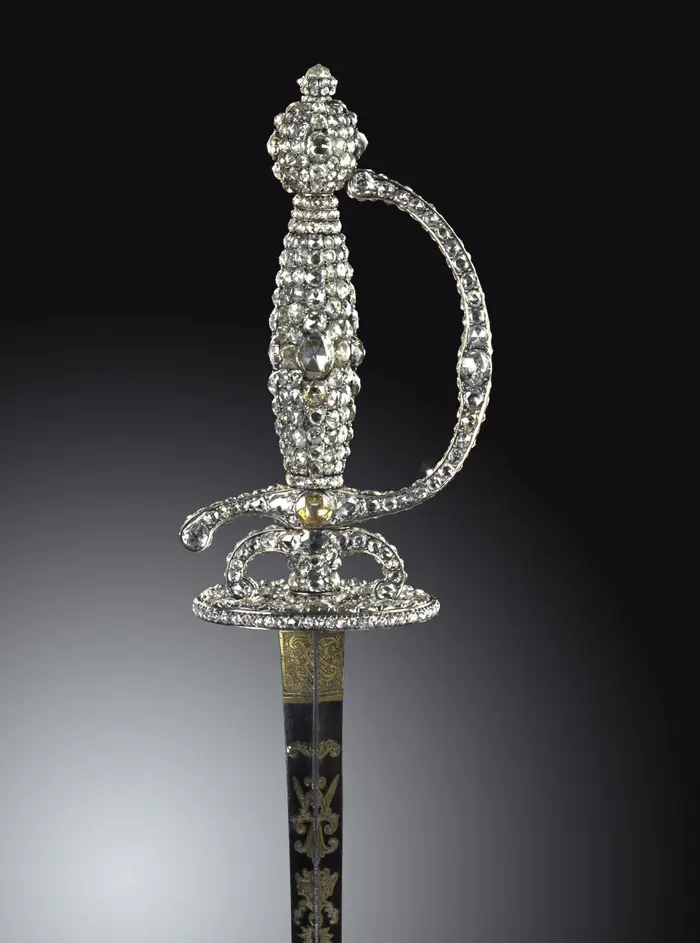
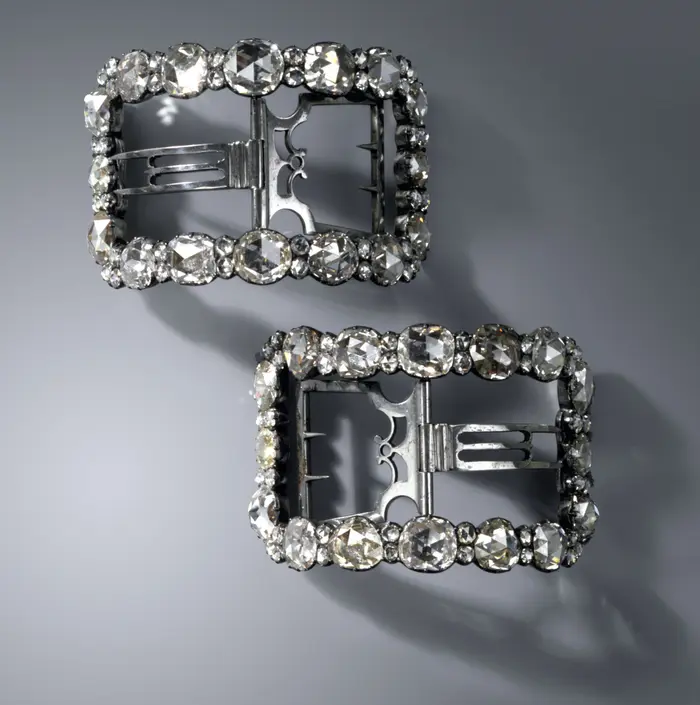
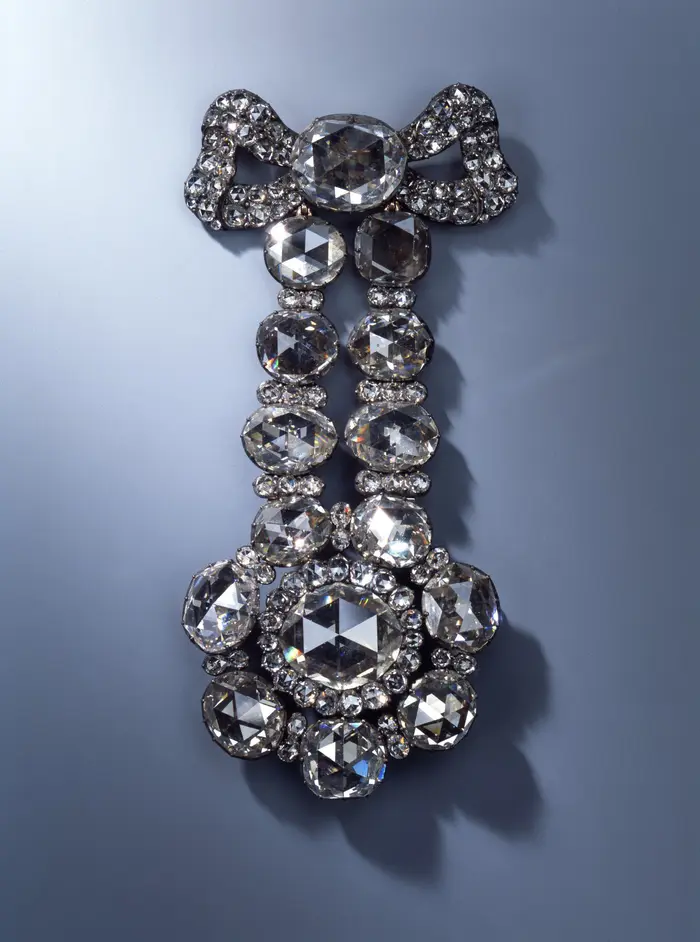
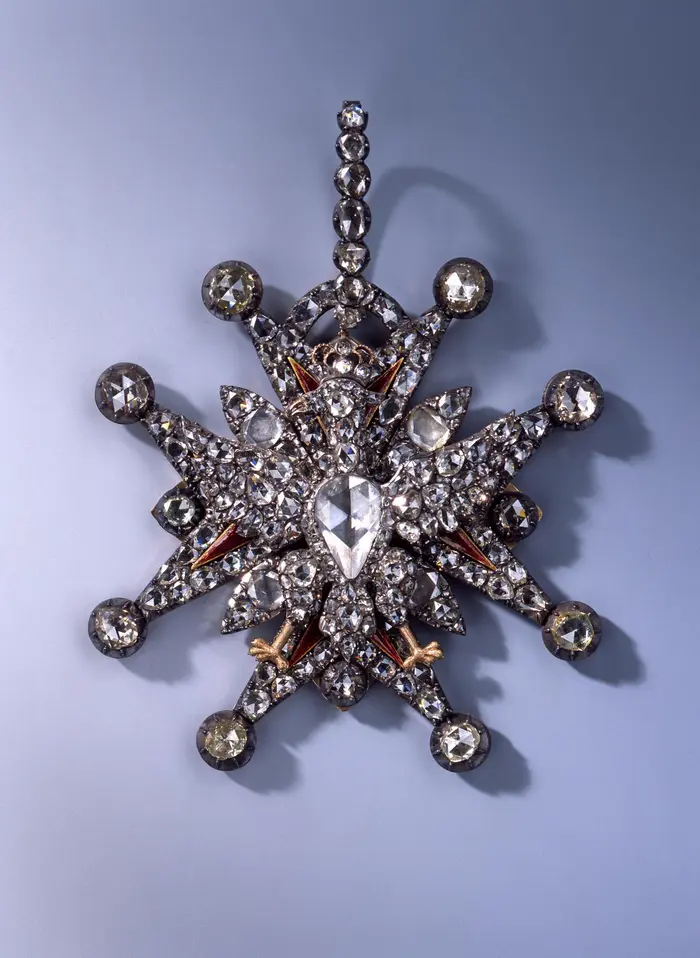
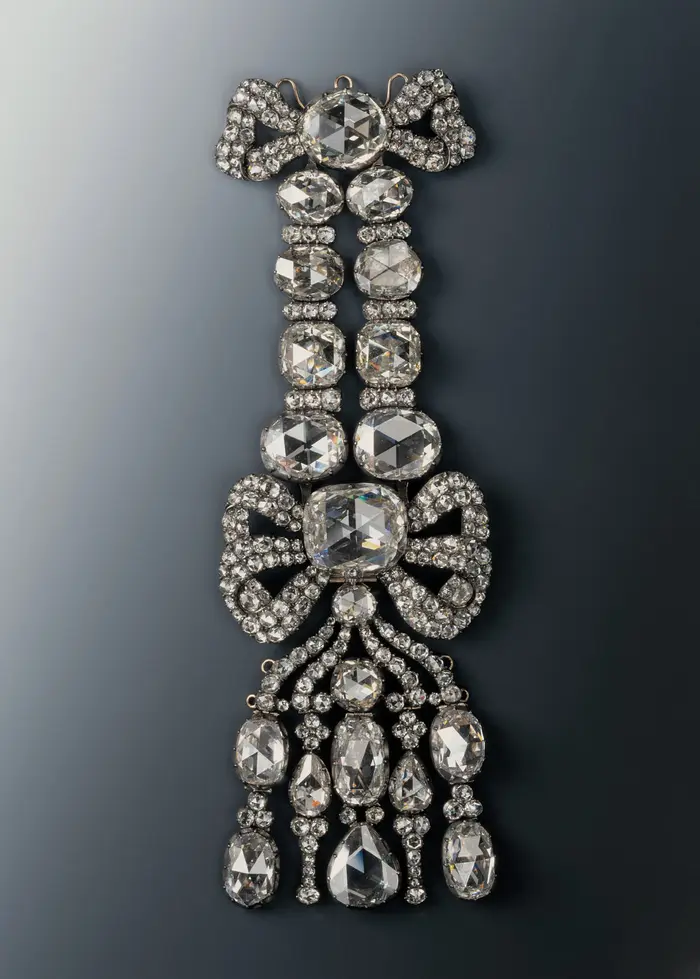
![[Translate to English:] sechs Rockknöpfe aus der Diamantrosengarnitur [Translate to English:] sechs Rockknöpfe aus der Diamantrosengarnitur](/fileadmin/_processed_/7/c/csm_VIII_9__1-10_7e67d18f2b.webp)
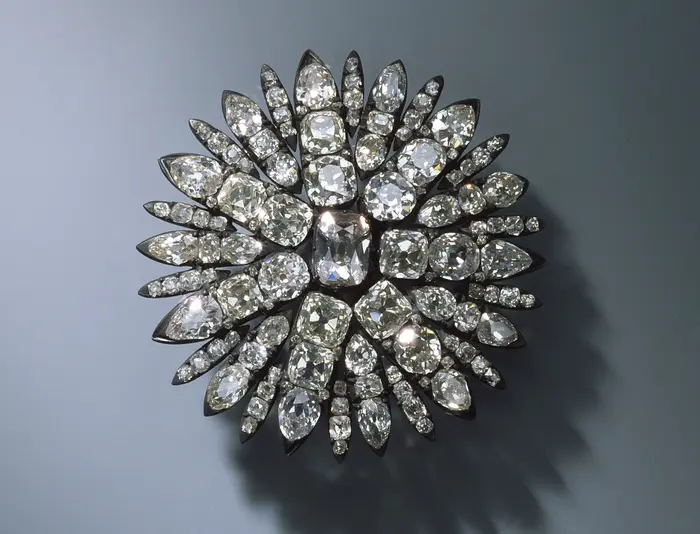
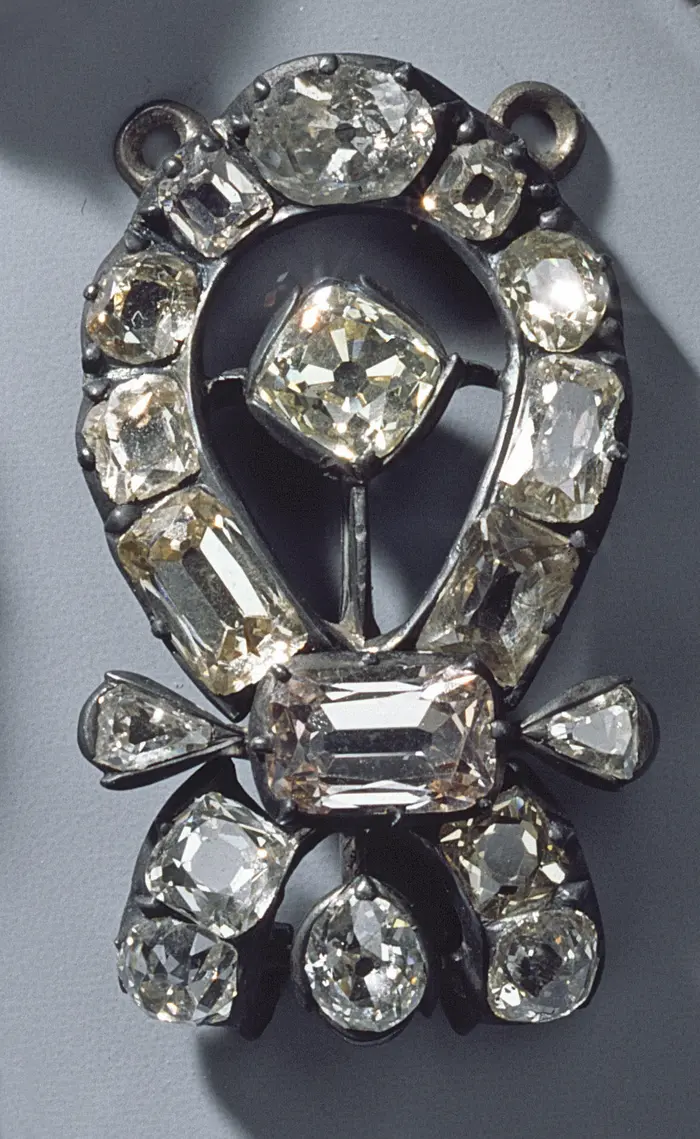
missing objects
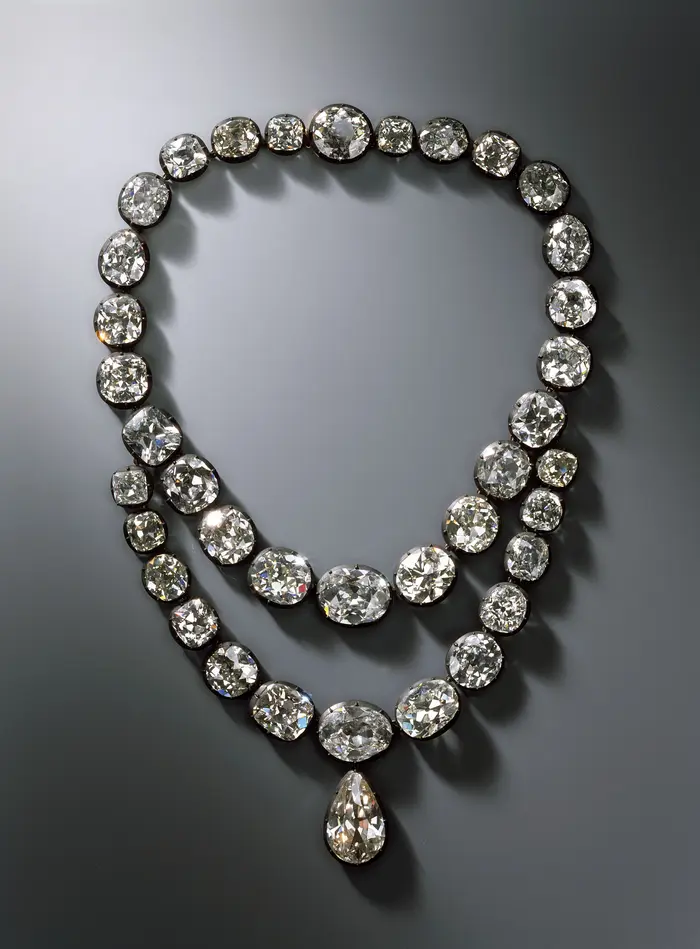
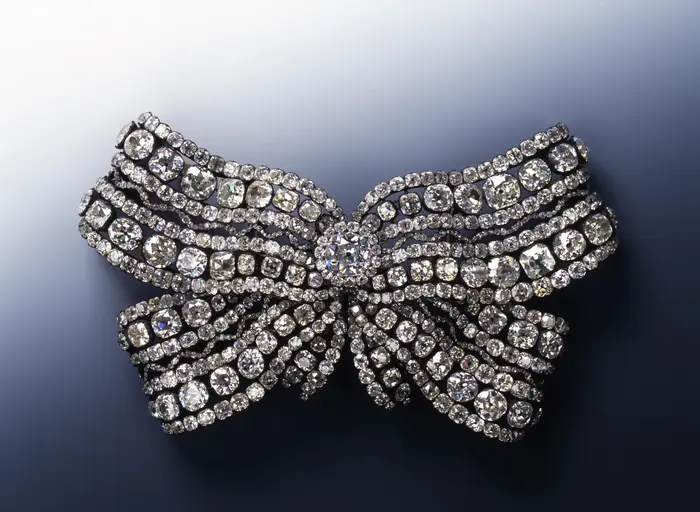
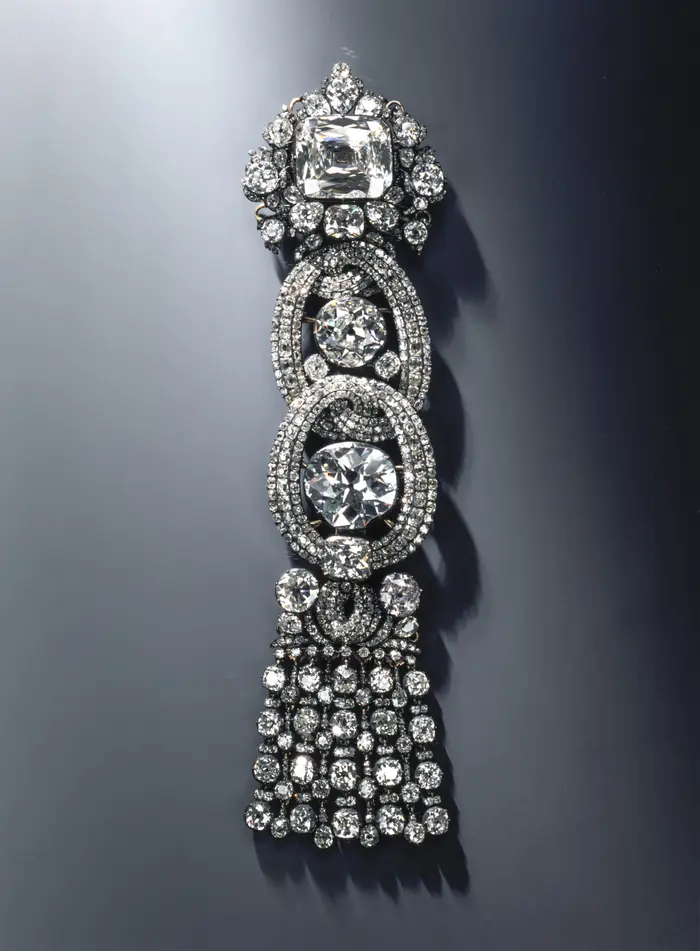
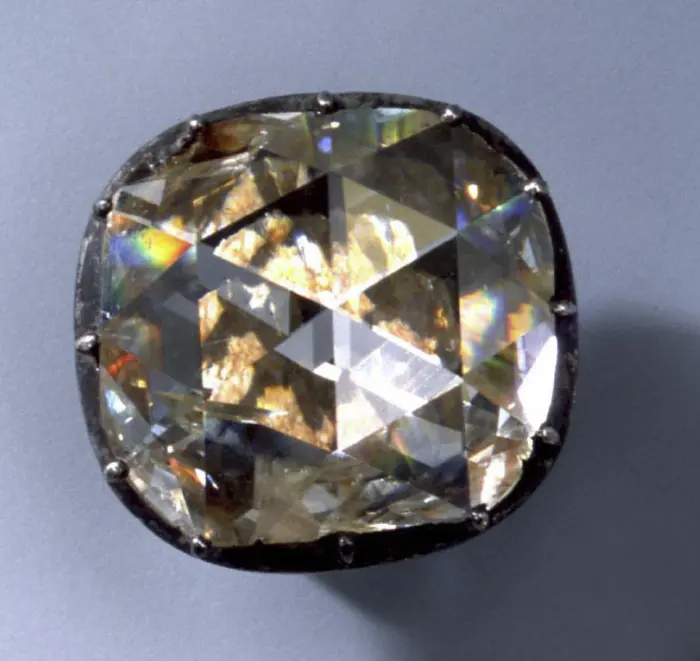
![[Translate to English:] 2 Rockknöpfe aus der Diamantrosengarnitur [Translate to English:] 2 Rockknöpfe aus der Diamantrosengarnitur](/fileadmin/_processed_/7/c/csm_VIII_9__1-10_7e67d18f2b.webp)
